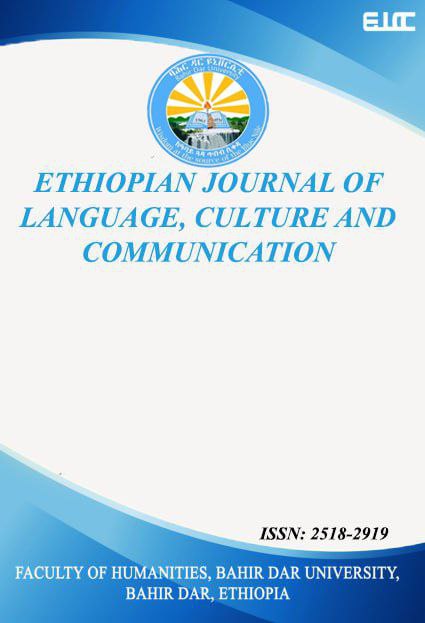Metaphysics of Time in Literary Translation and Life: Meaning-Making
Abstract
We don’t have to look at literary expressions as they are, but as they can be, especially the meaning of time in literary translation. The concept of time seems simple to address, but the devil is in the details. Time has common features of meaning-making in our lives and literary narratives; it has invincible impacts in our lives and stories as well. There are quite a few studies on literary translation, but time was not studied metaphysically. Thus, this study, aiming at expounding the literary and existential meanings of time, was conducted on the Metaphysics of Time in Literary Translation of The Almighty (1982) and its Amharic version, Moged (2010). Meaning-making is developmental, retrospective, cumulative, and contextual in the English narrative and life. The futures in the story of this novel and life are the same because both are found ahead and imagined, but there is nothing we can do about them. There is a hermeneutical complementarity between reading this narrative and living, and reading and living are forward actions, but meaning-making in both cases is a backward action. Life and reading are not sequences of events but quests for destiny and destination—meaning. In contrast, temporal becoming is the essence of the Amharic version, and the meaning of time in life and the story are not intertwined. It gets us stuck in the present. It doesn't get us to contemplate and substantiate the present with the past, future, and our experiences. Literary translation should not be a cakewalk that everyone barges into if it is to transform the philosophical, artistic, and aesthetic values of the source text into the target text and if it is only an activity for livelihood. Since being is time, meaning is within us as long as we quest for it, and since being is time, aren't we finite, but our thoughts?
Authors who publish with this journal agree to the following terms:
- Authors retain copyright and grant the journal right of first publication with the work simultaneously licensed under a Creative Commons Attribution License that allows others to share the work with an acknowledgement of the work's authorship and initial publication in this journal.
- Authors are able to enter into separate, additional contractual arrangements for the non-exclusive distribution of the journal's published version of the work (e.g., post it to an institutional repository or publish it in a book), with an acknowledgement of its initial publication in this journal.
- Authors are permitted and encouraged to post their work online (e.g., in institutional repositories or on their website) prior to and during the submission process, as it can lead to productive exchanges, as well as earlier and greater citation of published work (See The Effect of Open Access).


